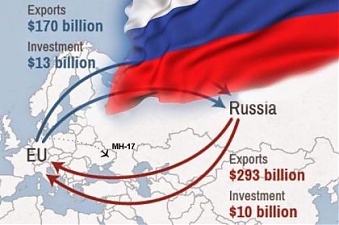Baltic States – CIS, Estonia, EU – Baltic States, Internet, Legislation, Modern EU, Technology
International Internet Magazine. Baltic States news & analytics
Thursday, 25.04.2024, 02:53
Estonia creates sanctions online map for all of EU to use
 Print version
Print version |
|---|
"Unlike foreign policy statements, sanctions directly obligate the businesses and citizens of member states to avoid certain activities. This is why it is important that it is clear to the public what kind of responsibilities for the private and public sector of the EU accompany the sanctions," the Ministry of Foreign Affairs said. "At present it is not possible to find information quickly and simply. It is written down in hundreds of difficult legal acts, searching for the updated versions of which requires special knowledge and a lot of time to find," the ministry said.
"This kind of situation causes problems with implementing sanctions in the whole of the European Union. Due to excessive caution caused by ignorance, transactions with third countries which are not inconsistent with sanctions also fall through," the ministry said.
"In addition, both entrepreneurs and officials in all member states and in Brussels must every day handle similar inquiries on where to find information on what kind of sanctions are valid, whom the sanctions must be implemented against and so on," the ministry said.
The European Union is using sanctions more and more in its joint foreign and security policy. The EU at present is implementing approximately 40 sanction regimes, which have been set by the UN Security Council or the Council of the European Union. The aim of the Sanctions Map is to impart up to date informational digitally, simply and in a user friendly manner about the sanctions implemented in the EU, the Foreign Ministry said.
The Sanctions Map is to solve problems concerning accessing information, brings foreign policy closer to the citizens and helps make EU sanctions policies more transparent and comprehensible to the public.
The EU Sanctions Map will be made public at the end of this week, when the EU Digital Summit is to be held in Tallinn.
After the Estonian presidency of the Council of the European Union, the tool will be handed over to the European Commission, which will then start maintaining it.








 «The Baltic Course» Is Sold and Stays in Business!
«The Baltic Course» Is Sold and Stays in Business!

